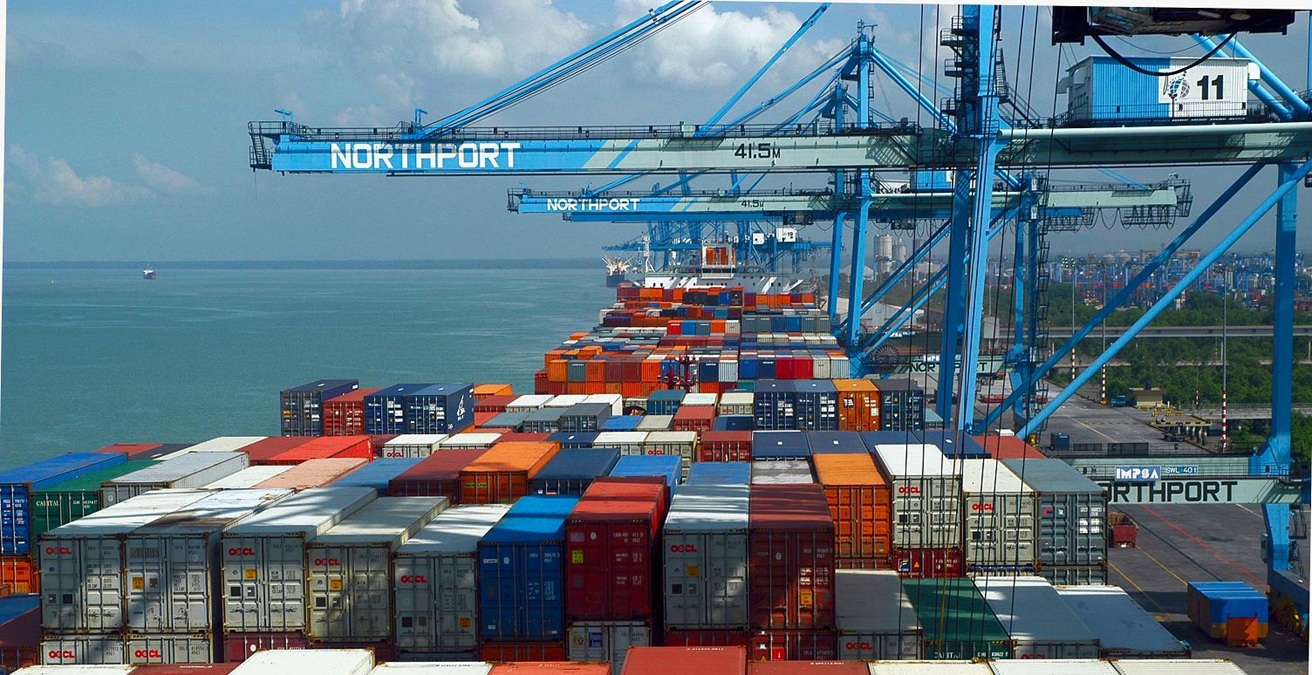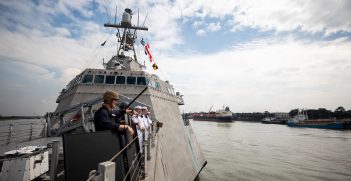Trump’s Tariffs and their Impact on ASEAN: Historical Context and Future Directions

Donald Trump’s tariff policies have disproportionately impacted ASEAN economies, disrupting exports, deterring investment, and straining US-ASEAN trade ties. To navigate these challenges, ASEAN countries are exploring diversification, regional integration, and domestic reforms to enhance resilience and reduce vulnerability to protectionist shocks.
United States President Donald Trump’s imposition of higher tariffs on ASEAN (Association of Southeast Asian Nations) countries has posed significant economic and political challenges. Introduced under the “America First” trade policy to address trade imbalances and boost US domestic industries, these tariffs have disrupted global supply chains and altered trade relationships. For ASEAN, this underscores the need for strategic economic responses, stronger regional collaboration, and long-term diversification. A review of US trade policy history and the current situation reveals that addressing these challenges requires both immediate measures and broader adaptation to shifting global trade dynamics.
US tariffs and their uneven impact across ASEAN
Recent US trade policies have disproportionately targeted ASEAN countries, particularly those with large trade surpluses with the United States or deep integration into global supply chains. Vietnam has been hit especially hard, with its record trade surplus with the US reaching a record US$123 billion in 2024. Cambodia and Laos have also been heavily impacted, burdened by tariff rates of 49 percent and 48 percent, respectively. While these measures aim to “level the playing field” in global trade, they have introduced substantial economic risks for affected nations.
Higher tariffs reduce the competitiveness of ASEAN exports in the US, impacting trade volumes and revenue. Key industries like electronics, textiles, and agriculture face supply chain disruptions, while tariff uncertainty deters foreign direct investment (FDI), redirecting it to less exposed nations like the Philippines and Malaysia. Smaller economies, such as Cambodia and Laos, are especially vulnerable due to their reliance on US exports, exacerbating their economic fragility.
A historical perspective on US trade Policies
The use of tariffs as an economic tool is long-established in US policy, aimed at addressing trade imbalances, protecting domestic industries, or pursuing geopolitical goals. A notable example is the Smoot-Hawley Tariff Act of 1930, which raised duties on over 20,000 imports. Intended to safeguard American jobs during the Great Depression, it backfired by triggering retaliatory tariffs, collapsing global trade, and worsening the crisis.
Post-World War II, the US championed trade liberalisation through frameworks like the General Agreement on Tariffs and Trade (GATT) and the World Trade Organization (WTO). However, protectionism has resurfaced during periods of economic uncertainty. Trump’s “America First” trade policy marked a stark shift from liberalisation, using tariffs to reduce trade deficits and counter China’s growing influence. The recent tariffs on ASEAN countries reflect this trend. Yet, as history shows, such measures often produce unintended consequences, disrupting trade and harming both the imposing nation and its partners.
The economic consequences for ASEAN
The economic impact of Trump’s tariffs on ASEAN countries is significant and multifaceted. Higher tariffs increase the cost of ASEAN exports to the US, reducing their competitiveness. Key sectors like Vietnam’s electronics and semiconductors, Cambodia’s textiles and footwear, Malaysia’s furniture, and Thailand and Indonesia’s agricultural products, including rubber and palm oil, are particularly affected. These disruptions in global supply chains impact American consumers by raising prices on everyday items while undermining the role of ASEAN nations as critical manufacturing hubs in these industries. Vietnam, for instance, has become a major exporter of smartphones and electronics to the US, making it especially vulnerable to such trade measures.
Moreover, these tariffs risk pushing ASEAN countries closer to China to counterbalance the effects of US protectionism. Initiatives like the Belt and Road Initiative (BRI) and the Regional Comprehensive Economic Partnership (RCEP) may deepen ASEAN-China ties. While China may not absorb a large share of ASEAN exports due to its production capacity, it could boost investments in ASEAN industries, strengthen trade agreements, and enhance regional collaboration. Such shifts could reduce US influence in the region and bolster China’s economic and political presence, potentially altering the balance of power in the Asia-Pacific. For instance, Vietnam and Indonesia have already experienced growing Chinese investment in manufacturing and infrastructure, a trend likely accelerated by US tariffs.
ASEAN’s policy options
In response to higher Trump’s tariffs, ASEAN countries have several policy options, though many are constrained by economic realities. Retaliatory tariffs on US goods, while a potential negotiating tactic, risk escalating trade tensions. This approach is largely unfeasible for most ASEAN nations due to their heavy reliance on US trade. Smaller economies like Laos, Cambodia, and Myanmar are particularly limited by their narrow economic bases, while larger economies such as Vietnam and Indonesia may hesitate to take such measures to avoid jeopardising critical trade relationships. These challenges highlight the need for pragmatic and collaborative strategies.
Another option is pursuing legal challenges through the WTO or trade agreements. For instance, China and the EU have previously filed WTO complaints against US tariffs, targeting industries with political sensitivity. ASEAN nations could explore similar actions, such as imposing selective tariffs on key US exports, but this approach requires careful consideration to minimise domestic disruption while applying pressure on US policymakers.
Pursuing domestic economic reforms offers a more sustainable path for ASEAN countries. Enhancing competitiveness through reduced import tariffs, improved infrastructure, and investment in high-value industries is critical. Equally important is diversifying trade relationships to reduce dependence on the US market and mitigate risks from protectionist policies. Strengthening ties with emerging markets in South Asia, Latin America, and Africa and non-traditional partners like Australia, New Zealand, and the Gulf Cooperation Council (GCC) countries can help bolster resilience.
While ASEAN has advanced regional cooperation through agreements like RCEP and the Comprehensive and Progressive Agreement for Trans-Pacific Partnership, these frameworks alone cannot fully address the challenges Trump’s tariffs pose. Broader diversification and reduced reliance on dominant economies like the US and China are vital for long-term stability in an increasingly volatile global trade environment.
Lessons from economic history
Economic history offers key lessons for ASEAN as it faces challenges from higher US tariffs. First, protectionism often backfires, as seen with the Smoot-Hawley Tariff Act of the 1930s, which triggered retaliation and disrupted global trade during the Great Depression. Similarly, Trump’s current tariffs risk worsening economic headwinds and increasing recession risks in the US, with potential spillover effects on ASEAN economies reliant on US trade. To mitigate these risks, ASEAN must take proactive measures to safeguard their economies and remain vigilant to global economic shifts.
Second, regional cooperation enhances resilience. The success of the European Union in mitigating external trade shocks demonstrates the importance of regional integration. ASEAN can adopt a similar approach, fostering intra-regional trade and investment to build resilience against external pressures.
Finally, adaptability is crucial for long-term growth. History shows that nations adjusting to shifting trade dynamics are better positioned to succeed. ASEAN can complement export-led growth with strategies focused on domestic consumption, innovation, and sustainability. Vietnam, for example, is expanding its technology and manufacturing sectors while fostering a growing middle class to reduce reliance on exports. Similarly, Indonesia is investing in renewable energy and digital infrastructure to attract high-value industries and strengthen its economy. By prioritising adaptability, ASEAN can mitigate protectionist risks and achieve sustainable, resilient growth.
Severo C. Madrona, Jr., PhD is a Professorial Lecturer at the Department of History, Ateneo de Manila University; the National College of Public Administration and Governance, University of the Philippines-Diliman (UP-NCPAG); the Ramon V. del Rosario College of Business, De La Salle University Manila; and the School of Diplomacy and Governance, De La Salle-College of St. Benilde.
This article is published under a Creative Commons License and may be republished with attribution.





